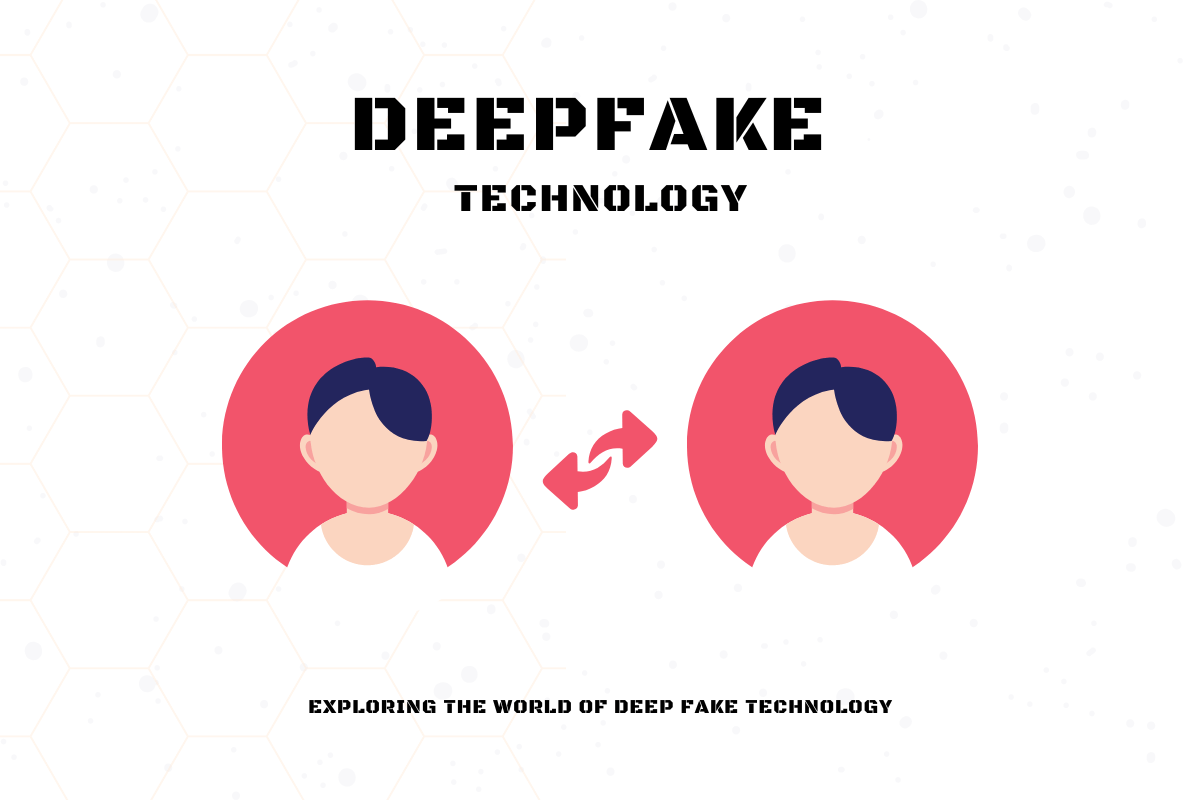Introduction
In recent years, the advancement of artificial intelligence (AI) has brought about a groundbreaking technology known as deep fake. This technology, which combines deep learning and video editing techniques, creates highly realistic fake videos and images indistinguishable from reality. While deep fake technology has gained significant attention for its entertainment value, its rise raises concerns regarding its potential misuse and ethical implications. This article will explore the astonishing rise of technology, its applications, ethical concerns, and ways to combat its negative effects.
Understanding Deep Fake Technology
Definition and Background
Deep fake technology (Link) uses artificial intelligence algorithms, specifically deep learning techniques, to manipulate or alter visual and audio content to create real and deceptive videos or images. The term “deep fake” is derived from the combination of “deep learning” and “fake.” Deep learning involves training neural networks on vast data to recognize patterns and generate new content based on the learned patterns.
Deep fake originated from academic research in machine learning and computer vision. However, it gained widespread attention when it started being used for creating highly convincing fake celebrity pornographic videos. Since then, deep fake technology has evolved and expanded its applications beyond adult content.
How Deep Fake Works
Deep fake technology utilizes generative adversarial networks (GANs) to create fake content. GANs consist of two neural networks, a generator and a discriminator, that work together competitively. The generator network generates fake content, such as videos or images, while the discriminator network tries to distinguish between real and fake content.
During the training process, the generator network learns to create realistic content to deceive the discriminator network. As the training progresses, the generated content becomes increasingly convincing, making it difficult to differentiate between real and fake.
Also Read: Breaking Barriers, Unlocking Potential: The Tech Revolution in WCPSS Classrooms
Applications of Deep Fake Technology
Entertainment Industry
Deep fake technology has found a significant application in the entertainment industry. It allows filmmakers and video game developers to bring deceased actors or historical figures back to life on the screen. Deep fake algorithms can generate new scenes or performances that closely resemble the original individual by using existing footage and images.
This technology has also created viral videos and memes, often for humorous or satirical purposes. Deep fake videos have used celebrities and public figures as subjects, superimposing their faces onto different characters to create entertaining and sometimes bizarre content.
Politics and Manipulation
Deep fake technology has raised concerns about its potential impact on politics and democracy.
Manipulating videos and images allows for spreading false information, generating fake news, and manipulating public opinion, which can target political figures with deep fake videos to sow confusion and mistrust among the public.
Such manipulated content can influence elections, incite conflicts, and undermine the credibility of individuals or institutions. The authenticity and trustworthiness of audio and video evidence may be questioned, making it increasingly challenging to discern fact from fiction.
Journalism and Fake News
The rise of deep fake technology poses a significant challenge to journalism. With the increasing availability of powerful AI tools, malicious actors can create convincing fake videos or audio recordings of public figures, spreading misinformation and disinformation.
The risk of deep fake videos being used to manipulate public perception and influence news narratives is a growing concern. Journalists and media organizations face the challenge of verifying the authenticity of video footage and audio recordings, requiring advanced forensic techniques to detect potentially deep fake content.
Ethical Concerns and Challenges
Misuse and Manipulation
One of the primary ethical concerns surrounding deep fake technology is its potential for misuse and manipulation. Malicious individuals can exploit the ability to create highly realistic fake videos and images for purposes such as revenge porn, blackmail, or defamation. Innocent individuals can become victims of false accusations or have their identities misrepresented through deep fake content.
Furthermore, deep fake technology can generate fake evidence in criminal cases, casting doubt on the reliability of video or audio recordings as proof. This raises significant challenges for the legal system in ensuring the integrity of evidence and protecting the rights of individuals.
Privacy and Consent
Deep fake technology raises privacy concerns due to its ability to generate fake content using existing images or videos without the individuals’ consent. Faces and voices can be manipulated, violating personal privacy and the potential for harassment or abuse.
Lack of consent and control in deepfake content usage can harm reputations and personal lives. This situation necessitates clear guidelines and regulations to safeguard privacy and prevent the unauthorized use of personal information.
Legal Implications
The rise of deep fake technology presents legal challenges and calls for updated legislation to address the potential harm it can cause. Laws regarding defamation, intellectual property rights, and privacy must be revisited to encompass the unique challenges deep fake content poses.
The responsibility for identifying and punishing those who create and distribute malicious deep fake content remains a complex task. Legal frameworks must keep pace with technological advancements to ensure that individuals and society are adequately protected from the harmful effects of deep fakes.
Combating Deep Fakes
Detection and Verification
Efforts are underway to develop advanced detection and verification methods to identify deep fake content. Researchers and technology companies are investing in AI-based algorithms that can analyze videos and images to detect signs of manipulation. These techniques involve analyzing facial inconsistencies, artifacts, and other anomalies that may indicate the presence of deep fake content.
Furthermore, collaborations between academia, industry, and policymakers are essential to establish standards and protocols for certifying and verifying original video and audio content. This will help build trust and confidence in the digital media landscape and mitigate the risks of deep fake technology.
Education and Awareness
Educating the general public about the existence and potential risks of deep fake technology is crucial. Increasing awareness about the manipulative capabilities of deep fakes can help individuals become more discerning consumers of online content. Promoting media literacy and critical thinking skills can empower individuals to recognize and question the authenticity of videos and images they encounter.
Educational institutions and organizations should integrate media literacy programs into their curricula, teaching students how to navigate the digital world responsibly and critically evaluate information.
Future Implications
As deep fake technology evolves, its implications for society and individuals will likely become more complex. New challenges will arise, requiring constant vigilance and innovative solutions. Technological advancements in both deep fake creation and detection will shape the future landscape of online content.
Collaboration among policymakers, tech developers, and society is crucial in tackling ethical concerns, legal implications, and security risks linked to deep fake technology. Balancing innovation and safeguarding against harm will shape its future.
Conclusion
The astonishing rise of deep fake technology has introduced a new era of visual manipulation and deception. The ethical concerns and potential misuse of deep fake content cannot be ignored, even though its applications in the entertainment industry can be entertaining and amusing. The impact on politics, journalism, privacy, and legal systems requires urgent attention and collaborative efforts.
Addressing the challenges associated with deep fake technology requires a multi-faceted approach involving technological advancements, legislative measures, education, and awareness. By staying vigilant, promoting media literacy, and fostering responsible use of AI technologies. we can mitigate the negative effects of deep fakes and preserve the integrity of digital content.
FAQs
Q1. How can I protect myself from being a victim of deep fakes?
To protect yourself from being a victim of deep fakes, you must be cautious about the content you consume and share online. Be skeptical of videos or images that seem suspicious or too good to be true. Verify the authenticity of sources and rely on reputable news outlets. Consider using digital watermarking or other tamper-evident technologies to protect your visual content.
Q2. Are there any positive aspects to deep fake technology?
While deep fake technology raises ethical concerns, it also has potential positive applications. The film industry uses it, for example, to resurrect deceased actors for a limited time or to create more immersive virtual reality experiences. Educational purposes also employ deep fakes, aiding in recreating historical events or facilitating language learning.
Q3. Can deep fake technology be used for good purposes?
Deep fake technology has the potential to be utilized for positive purposes. Various fields, including healthcare, can leverage it to aid in medical training, simulation, and patient education. Deep fake algorithms can generate realistic 3D models of patients for surgical planning, improving surgical outcomes. Additionally, it can aid in speech therapy and rehabilitation for individuals with speech disorders.
Q4. What steps can social media platforms take to prevent the spread of deep fakes?
Social media platforms are crucial in preventing the spread of deep fakes. They can implement robust content moderation policies, including automated detection systems and human reviewers. Collaborating with AI researchers and technology companies can help develop effective deep fake detection algorithms. Additionally, promoting media literacy among users and providing tools to report and flag potential deep fake content can contribute to mitigating the impact of deep fakes on social media platforms.




